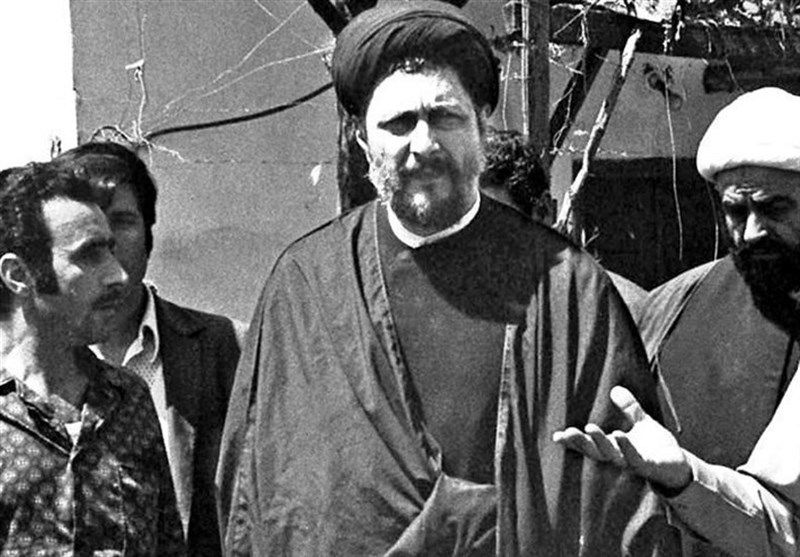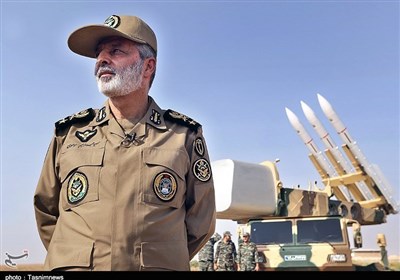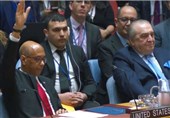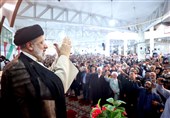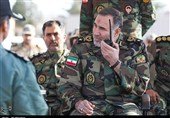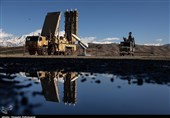An Argument against Ronen Bergman’s 'The Secret War with Iran' – 21
TEHRAN (Tasnim) – Bergman has leveled baseless accusations against Imam Musa Sadr, like connection with the CIA and Savak. By highlighting such allegations, he intends to deflect attention away from Mossad’s central role in the kidnapping of Sadr.
Iranian journalist and expert Abbas Salimi Namin has disproved the claims and opinions of Israeli analyst Ronen Bergman in the book ‘The Secret War with Iran’. ‘The Secret War with Iran’, written by renowned Zionist journalist Ronen Bergman, was published in 2008 by Simon & Schuster publishing company in the United States.
Born in 1972, Bergman is a graduate of Tel Aviv University in the Middle East political relations. He is a famous Zionist journalist and analyst in the military and security fields who has worked with Israeli newspapers ‘Haaretz’ and ‘Yedioth Ahronoth’, American dailies and weeklies such as ‘The New York Times’, ‘Newsweek’, ‘The Wall street Journal’, and British media groups including ‘The Guardian’ and ‘The Times’.
Bergman has been interested in topics relating to the enemies of the Zionist regime (particularly Iran, Hezbollah and the Palestinian resistance groups), as well as subjects on the history of the Israeli regime’s assassination operations, which are cited in his recent book ‘Rise and Kill First’.
In an interview with Persian TV channel ‘Iran International’, Bergman has pointed to the Iranian nuclear program and the issues surrounding it -particularly the Zionist regime’s secret attempts to halt the process of nuclear activities in Iran and assassinate Iranian scientists. He has also cited ex-CIA chief Michael Hayden as saying that the assassination of nuclear scientists is the best way to impede Iran’s growing process in that field, and has implicitly held Israel responsible for it.
In the book ‘The Secret War with Iran’, Bergman has written a history of encounters between Iran and the Zionist regime, while the bulk of the book relates to the Lebanese Hezbollah -Iran’s main ally in the battle against the Zionist regime since its formation until the 33-day War- focusing on the role of Martyr Imad Mughniyeh.
His book also includes sections about the final years of the Pahlavi regime and victory of the Islamic Revolution in Iran, short periods of the war imposed by the Ba’thist party of Iraq on Iran (focusing on the McFarlane affair), Iran’s role in supporting the Palestinian groups, and the Iranian nuclear program.
Bergman’s multiple undocumented and untrue comments as well as personal and purposeful analyses (with the main purpose of displaying Israel’s power, especially in a competition with the US) that have repeatedly come in his book make a critical review of the book necessary for Iranian readers.
Director of the Iran History Studies and Compilation Bureau, Abbas Salimi Namin, has written an extensive criticism in a book about ‘The Secret War with Iran’. Born in 1954, Salimi Namin is an experienced journalist and a renowned Iranian researcher in history and political sciences who has published many articles and books.
About ‘The Secret War with Iran’
Part 21:
In response to the divisive objectives of the author, several points need to be highlighted:
1. The resistance current in the region has no problem with native Jews living in Palestine and has said time and again that the future of this country would be decided through a general election in which all residents – including Christians, Jews, Muslims and refugees whose fate is unclear due to occupation – would participate. Therefore, the Resistance movement seeks peaceful coexistence with Jews, without apportioning the blame for the Zionist crimes to them. Of course in case Palestinians decide for their own future through election, the occupying Zionist regime will naturally disappear.
2. Following the occupation of Lebanon by Zionist forces, pro-Zionist governments dispatched forces to this country in order to fully support the Zionists under the cover of UN peacekeeping forces. The core components of Multinational Force in Lebanon (MNF) were US Marines and French servicemen, who had arranged everything with the occupiers and their local agents – the Phalange Movement. Therefore, the Resistance movement had become very sensitive to the extensive presence of military forces in Lebanon from the governments supporting the Zionists.
3. Contrary to Bergman’s allegations, Hezbollah never sought subjection of Christians in Lebanon. Lebanon is Shia-majority and its Shia population has recorded significant political growth in the past decades. But there is no sign of Hezbollah challenging the traditional Christian power. That explains why Christians are today supporting the Resistance front in Lebanon because they are assured that Hezbollah is not after power; rather, it is a volunteer force ready for sacrifice in favor of national dignity. This fact has been noted by Bergman too: “…a lean, tough, well-trained fight machine whose personnel could not be persuaded with cash to give up information about their brothers, and which would have the capabilities of commando units in the best armies in the world.” (Chapter 4, p. 81)
That is the description given by Hezbollah’s sworn enemy; a force far from power ambitions. This very fact has frustrated the Zionists. Of course Bergman, in his contradictory history-making, describes the Resistance front as a dependent movement. He also expresses untrue allegations about Imam Musa Sadr. “He (Sadr) had close links to the Shah, and with the Shah’s blessing had travelled to Lebanon to set up a Shia charitable organization, with the help of the Savak, the Shah’s secret service… In turn he supplied the Shah’s emissaries with a comprehensive picture of the situation in Lebanon, and no less important, of what was happening in the Arab capitals… He established links with the CIA station in Beirut, too, and gave the agency much valuable information about the Soviet and East German presence in Syria and Lebanon.” (Chapter 4, pp. 66-67)
The author then holds out several possibilities about the disappearance of Imam Musa Sadr:
“In August 1978, al-Sadr vanished during a visit to Libya. His disappearance was the most important defining moment for the Shi’ites of Lebanon. Nobody knows what happened to him. Plenty of suspects had motives: the Libyan ruler, Muammar al-Gaddafi, was al-Sadr’s host at the time of his disappearance and would not have been happy that he was working with the CIA. The Shah’s regime might have wanted to pay him back for his support of the Islamic revolutionaries. The Khomeini camps were aware of al-Sadr’s ties to the Shah and might have wanted to get rid of a rival. Finally—and this was the Mossad’s assumption at the time—Yasser Arafat was unhappy that al-Sadr was trying to block his growing influence in Lebanon. Al-Sadr’s disappearance will likely remain a mystery, one of many in the complicated yet crucial history of modern Lebanon.” (Ibid)
Any pundit reviewing these contradictions will soon reach the understanding that the Zionists are covering up facts in this case too.
If Mohammad Reza Pahlavi was behind the criminal disappearance of Musa Sadr because of his secret cooperation with revolutionary fighters, how can he be linked to Savak and the CIA? These hypotheses contradict one another. In order to decrypt this secret, we may refer to other Zionist sources. As the last head of Mossad’s regional office in Tehran puts it: “A charismatic cleric of Iranian origin, named Musa Sadr whose niece was married off to Khomeini’s son Ahmad, applied khod’a to give headaches to the Shah and Savak. Thanks to a big budget at his disposal, Musa Sadr moved to administer Shia affairs in Lebanon as part of [his mission] to assist the poor. That laid the foundation for the establishment of the Amal organization which later became a guerrilla body. The same Amal set the stage for the formation of Hezbollah in Lebanon, which grew into one of the most political guerilla organizations on Earth.” (Big Satan, Small Satan, Eliezer Tsafrir, translated by Farnoosh Ram, Autumn 2007, Ketab Corps., Los Angeles, p. 57)
Therefore, Mossad’s assessment of Imam Musa Sadr is that he was intelligent and has managed to catch the Zionists and subsequently Savak by surprise and set up an armed organization that led to the formation of Hezbollah, and that is why he had elicited Mossad’s ire. This admission by Mossad’s representative contradicts other undue allegations against Imam Musa Sadr. The top Mossad officer has implicitly said that after the Imam Khomeini experience, more caution has to be exercised in order to eliminate persons who keep their long-term objectives secret and practice khod’a. “In July 2003, the US established the Coalition Provisional Authority (CPA) to run Iraq. CPA comprised 13 Shias, 5 Sunnis, 5 Kurds, 1 Turkman and 1 Assyrian. Ayatollah Hakim had prominent representatives in the parliament. In his interviews, he signaled comforting messages, but caution was needed in dealing with him and his allies. During anti-Shah revolt and demonstrations, Khomeini also sent messages of comfort, but he misled the Iranian nation by exercising khod’a and taqiya. [by implication the US and the Zionists]… Ayatollah Mohammad Baqer Hakim, along with about 100 worshippers, was killed in a horrible bombing and big car bomb blast as he was leaving Imam Ali Mosque in Najaf.” (Ibid, p. 515)
This Mossad official is openly saying that they would never let someone shoot to prominence as the Imam did. He also wished Imam Khomeini had been assassinated before becoming influential enough. “Wasn’t it necessary to ‘silence’ Khomeini and remove him in order to defeat the Revolution? Let me write more frankly and more rudely: Wasn’t it necessary to eliminate him?” (Ibid, p. 505)
Those who are today regretting having not assassinated Imam Khomeini at the beginning of his movement, are adopting a more cautionary tone about Ayatollah Mohammad Baqer Hakim due to the similarity of his struggles with those led by Imam Khomeini in the run-up to the Islamic Revolution. They do not hide their fury with Imam Musa Sadr’s struggles. Can’t they be the main culprits? The point which can bring us closer to truth is that Savak’s representative had contacted Mossad for information.
“Fooladi then asked for my view and raised two questions. In the first question, he asked my view about Imam Musa Sadr who had recently gone missing. It was not clear if Imam Musa Sadr was alive or not. I promised to look for an answer to this question. His next question was about the place Ayatollah Khomeini had lived in exile in Najaf. He said Savak is assured that the main sedition is born out of Khomeini and that he has recently fanned the flames of his seditionism. He said the Iraqi government should be strongly asked to deport him from Najaf.” (Ibid, p. 176)
Savak’s inquiry with Mossad about Imam Musa Sadr can at least show the Israeli intelligence service’s knowledge of the kidnapping. What’s more, Tsafrir prefers to remain silent with regard to Mossad’s response to Savak although the issue is highly significant. Reflecting Tel Aviv’s explanation in this regard could have shed light on Mossad’s role in this crime, i.e. abduction of Lebanon’s Shia leader. Of course Bergman says openly that Sadr’s abduction would remain a mystery because he knows quite well that Mossad will remain tight-lipped on this issue; otherwise, if the captors were from any other source, the Zionists could not have firmly said it would become “one of thousands of enigmas”. Taking stance in this way makes it clear that the abduction had been plotted by the Zionists and without their consent nothing would be disclosed. In other words, only those who are behind something can keep it secret. Another key point pertains to Bergman’s baseless accusations against Imam Musa Sadr, like connection with the CIA and Savak. By highlighting such allegations, he intends to deflect attention away from Mossad’s central role in the kidnapping of Sadr. Doubtlessly, if a reader accepts these lies he would erroneously conclude that there would be no reason for the Zionists to kidnap someone with close ties to the CIA. That is while the stance adopted by the head of Mossad’s regional office in Tehran openly displays their fury with Imam Musa Sadr’s performance. Regarding friendly ties between Imam Musa Sadr and the Pahlavi regime, it has to be noted that various sources like Savak documents and Assadollah Alam’s memoirs prove the contrary. Therefore such allegations are simply defamatory. Of course, by raising false allegations they also intend to erase the possible role of the Zionists in these crimes off minds. Therefore since Bergman has raised an allegation about the Court and Savak, we have no option but to act outside the procedure we had adopted in this criticism, i.e. citing Zionist sources. Therefore, we invite all researchers to review Savak’s documents on Imam Musa Sadr, published in three volumes by the Center for Historical Documents Review. These documents describe the Pahlavi regime’s treatment of the Lebanese Shia leader in the 1970s. Under direct instruction from Mohammad Reza Pahlavi, Iran’s Ambassador to Lebanon Mansour Qadar long sought to dethrone Imam Musa Sadr in Lebanon. Some of these documents will be cited. Of course, Amir Assadollah Alam’s memoirs directly reflecting Pahlavi II’s orders confirm this orientation. For instance, in Alam’s memoirs for the year 1974, we read: “I was received in audience in the morning…I briefed His Majesty about the talks with the ambassadors of Lebanon and Israel. As I had guessed, His Majesty did not accept the Lebanese ambassador. He said ‘we will not help Shias there as long as Sadr is there’.” (Alam’s Notes, edited by Ali-Naqi Alikhani, vol. 4, Maziar & Moin Publications, 2006, p. 71)
